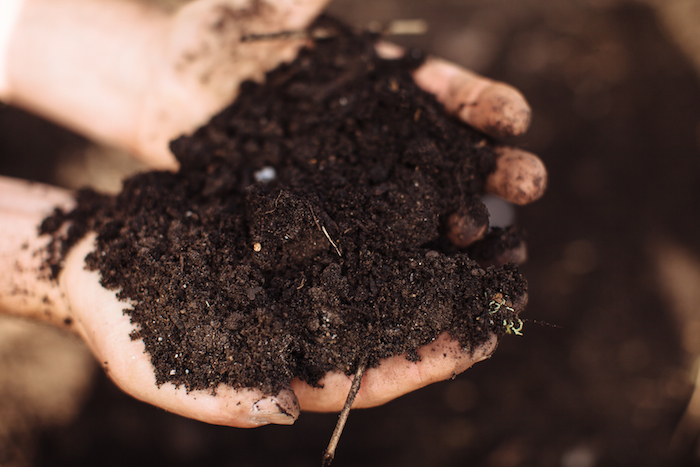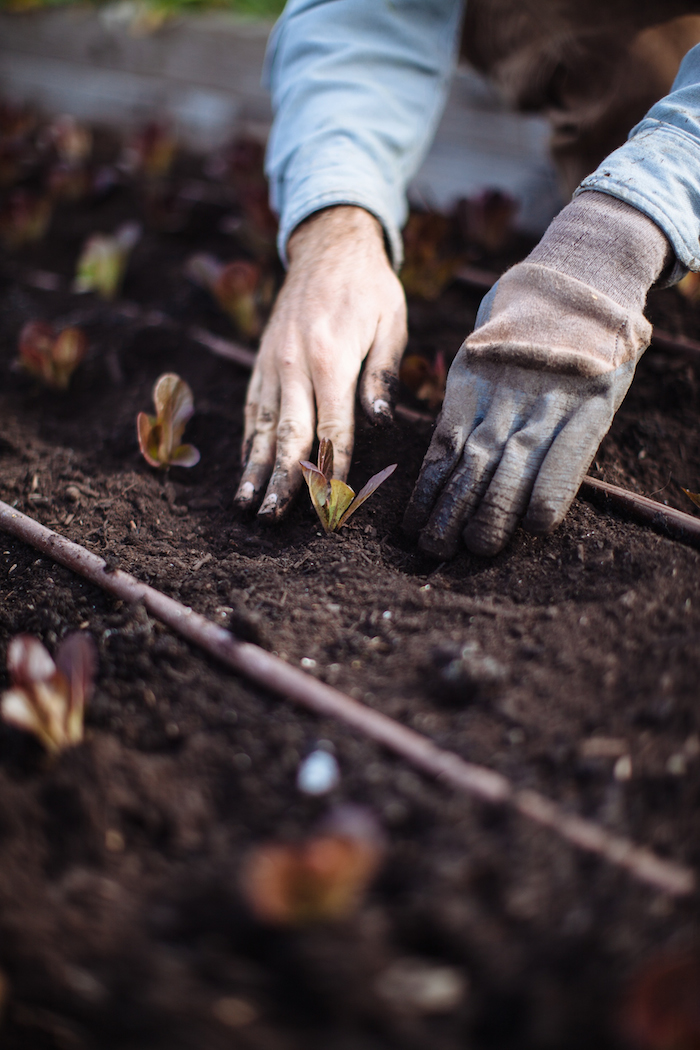How carbon farming might be the Earth’s last best chance.
Since the advent of agriculture about 10,000 years ago, when the tilling and disruption of soil became a signature mark of human civilization, carbon has been billowing into the Earth’s atmosphere. While a key component of all life, this lightweight element has also become Public Enemy No. 1 in the battle against climate change, sea level rise, ocean acidification, and all the other consequences that may come of a warming planet.
Now, on 80 acres near Occidental, agricultural ecologist Brock Dolman is helping to plot a way to save the planet from carbon dioxide poisoning. Dolman, the co-founder and program director of the Occidental Arts and Ecology Center (OAEC), hopes to teach farmers and land managers strategies for drawing carbon back into the soil. Applied widely, this simple and holistic concept, called “carbon farming,” could reverse centuries’ worth of emissions.
It’s not like it’s hard to do.
“There is a natural technology that has been pulling carbon from the atmosphere for three billion years,” Dolman says. “It’s called photosynthesis.”
In other words, simply allowing plants—from annual grasses and vegetables to vineyards and redwood trees—to grow uninterrupted could help humans secure a sounder future for all life on earth.
The OAEC, the Marin Carbon Project, and even county officials are encouraging landowners to grow perennial crops, which can sequester carbon on a long-term basis, and to avoid continual tilling of their land. Turning over the earth, either with machinery or shovels, exposes stored carbon to the air. When this happens, carbon atoms will bond one at a time with a pair of oxygen atoms, the whole unit floating away as an increasingly troublesome little molecule called carbon dioxide, which is now choking the atmosphere in unprecedented densities.
Developing clean energy technology and abandoning fossil fuels have gained attention as ways to defend the Earth against global warming. But Dolman says curbing emissions isn’t enough on its own.
“We also need to get the carbon dioxide that’s in the air back into the ground,” Dolman says.
The beauty of carbon farming is that the soil profits just as much as the air, says Valerie Minton, program director with the Sonoma Resource Conservation District, which has been encouraging farmers in the local effort to initiate carbon farming. Carbon-rich soil, Minton says, is more productive, producing more lucrative, nutrient dense crops. Carbon-rich soil also clings to water more aggressively than sandy dirt and can hold moisture through months of rainless weather. Crops themselves, meanwhile, protect against erosion, allowing further carbon concentration. Trees, bushes, and grasses also create windbreaks and provide habitat for pollinators.
There is a natural technology that has been pulling carbon from the atmosphere for three billion years. It’s called photosynthesis. ~ Brock Dolman
“Where you might be looking for one benefit, you wind up with 10,” Minton says.
The numbers in the carbon debacle are staggering. Human activities have transferred some 600 billion tons of carbon from the Earth into the atmosphere in the past 10,000 years—mostly by tilling soils and burning forests and consuming fossil fuels. Now, nearly half the globe’s atmospheric carbon—250 billion tons—must be drawn back into the Earth if humans are to stave off the most disastrous effects of global warming, according to Eric Toensmeier, a Massachusetts-based researcher and author of the forthcoming book Carbon Farming: a Global Toolkit for Stabilizing the Climate with Tree Crops and Regenerative Agriculture Practices.
Sequestering so much carbon will require hundreds of millions of acres of properly managed land. Woodlands may be especially lucrative carbon banks. A redwood tree is essentially a massive pillar of carbon, and, according to Toensmeier, an acre of redwood forest—wood, roots, and soil—can contain more than 300 tons of carbon.
But with about a third of the Earth’s land occupied by pasture or crops, the greatest net potential gains in carbon sequestration probably lie in the hands of the people who grow our food. A peach orchard can accumulate about eight tons of carbon per acre per year, Toensmeier says; olive orchards, about 12 tons. Even land planted with grassy annual crops can hold about 60 tons of carbon per acre, mostly in the soil. Sustainably managed pasture can draw several tons or more of carbon per year per acre and, eventually, contain a maximum of almost 120 tons of carbon per acre.
However, farmers everywhere continue to till their soil, releasing stored carbon into the sky, and changing this will take a revolution at a global scale. The United States, Toensmeier says, is lagging in initiating meaningful carbon farming initiatives or programs. He points to other nations around the world that are much more successfully promoting climate-friendly farming systems.
“Niger is ahead of us,” he says. “Latin America is ahead of us. India is ahead of us. When your own government refuses to acknowledge that climate change exists, you can’t get ahead of the game on these issues.”
Things may be changing. Interest among local grape growers, other farmers, and community leaders is on the rise. The OAEC hosts a five-day carbon farming course led by Toensmeier in August. At the state level, the California Climate and Agriculture Network is co-sponsoring Senate Bill 367 (see “Folks You Should Know” p10), which would incentivize farming practices that have climate benefits, including soil building, water and energy conservation, and generating renewable energy from organic agricultural waste.
Dolman says time is of the essence.
“Right now, carbon dioxide is dropping into the ocean, creating carbonic acid,” he says. “That means we need to move fast and sequester it on land.”
Article Resources:
To learn about OAEC’s Carbon Farming course, Aug. 3-7: oaec.org/courses/carbon-farming-practices-perennial-crops-sequester-carbon


